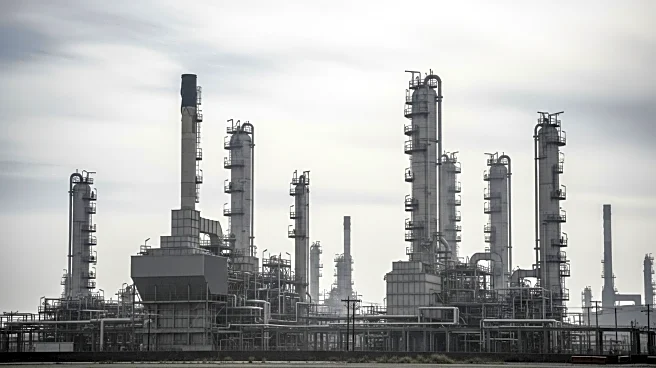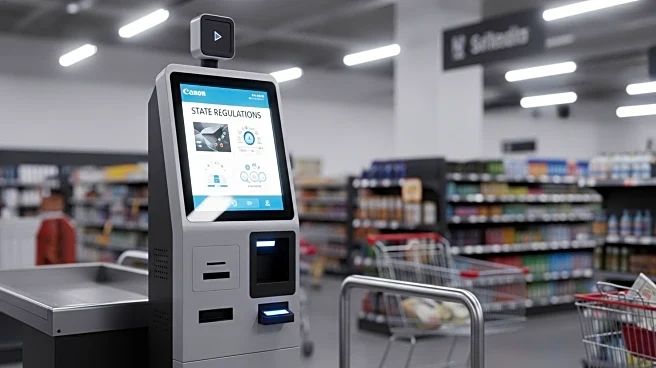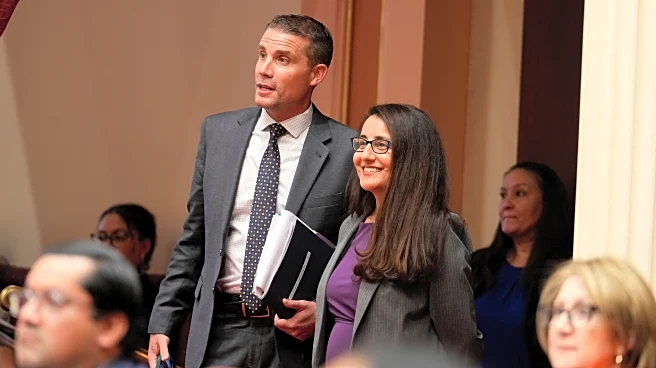What's Happening?
California is witnessing the closure of two major refineries, Phillips 66's Wilmington refinery in Los Angeles and Valero's Benicia refinery in the Bay Area, due to a significant decline in gasoline demand. These closures, expected over the next two years, will remove approximately 15% of the state's gasoline supply, which equates to around 2 billion gallons annually. The decline in gasoline consumption, which has been ongoing for nearly a decade, is attributed to more efficient internal combustion engines, increased hybrid vehicle use, and a surge in electric vehicle sales. California's gasoline consumption peaked in 2015 at over 15 billion gallons and dropped to about 13.4 billion gallons by 2024. The state government, led by Governor Newsom, is engaging with refinery operators and potential buyers to explore options to keep these facilities operational, including potential financial or regulatory concessions.
Why It's Important?
The closure of these refineries highlights a significant shift in California's energy landscape, driven by declining gasoline demand and the rise of electric vehicles. This transition poses challenges for the state's fuel supply stability and economic implications for communities reliant on the refining industry. The closures could lead to short-term supply shortages and price volatility, affecting consumers and businesses. Additionally, the shift underscores the broader trend of energy transition, where traditional fossil fuel industries face economic pressures as cleaner technologies gain traction. Policymakers are tasked with balancing the need for a stable energy supply with the realities of an evolving market, which may require strategic investments in renewable energy infrastructure and workforce transition programs.
What's Next?
As California continues to push for a cleaner energy future, the state is likely to see further declines in gasoline demand, potentially leading to more refinery closures. The Advanced Clean Cars II mandate, requiring 100% zero-emission vehicle sales by 2035, will further accelerate this trend. Policymakers may need to focus on expanding electric vehicle infrastructure, increasing renewable energy generation, and supporting communities affected by the transition. The state's experience could serve as a model for other regions facing similar shifts as electric vehicle adoption increases globally.
Beyond the Headlines
The decline in gasoline demand and subsequent refinery closures in California reflect a broader systemic change in the energy sector. As electric vehicles become more prevalent, the traditional internal combustion engine ecosystem, including gas stations and maintenance services, will face significant disruptions. This transition also impacts the demand for hydrogen, as refineries are major consumers of this resource. The closures signal a need for strategic planning to ensure a smooth transition to a sustainable energy future, balancing environmental goals with economic and social considerations.














